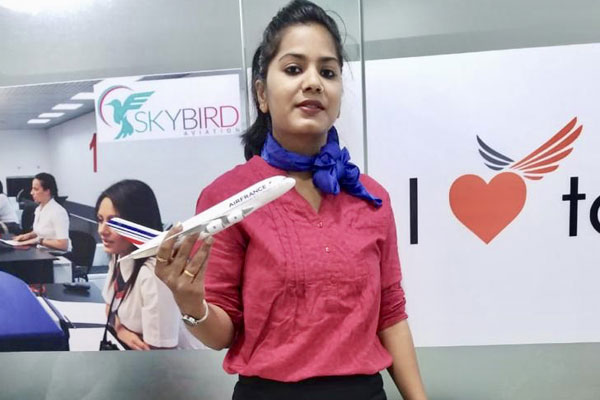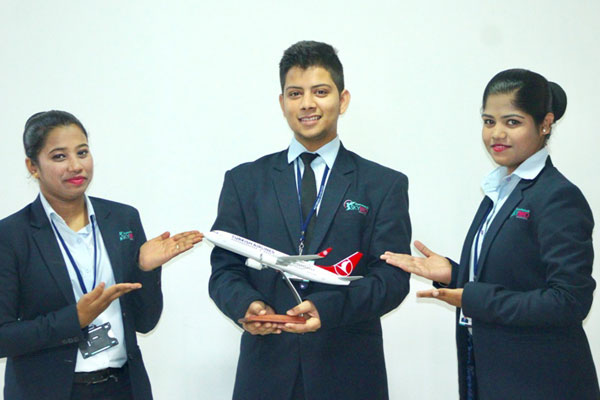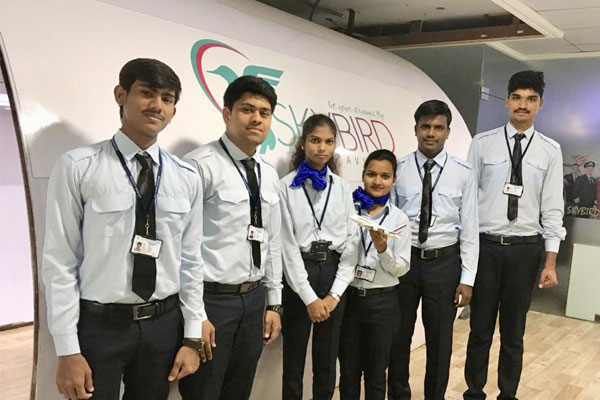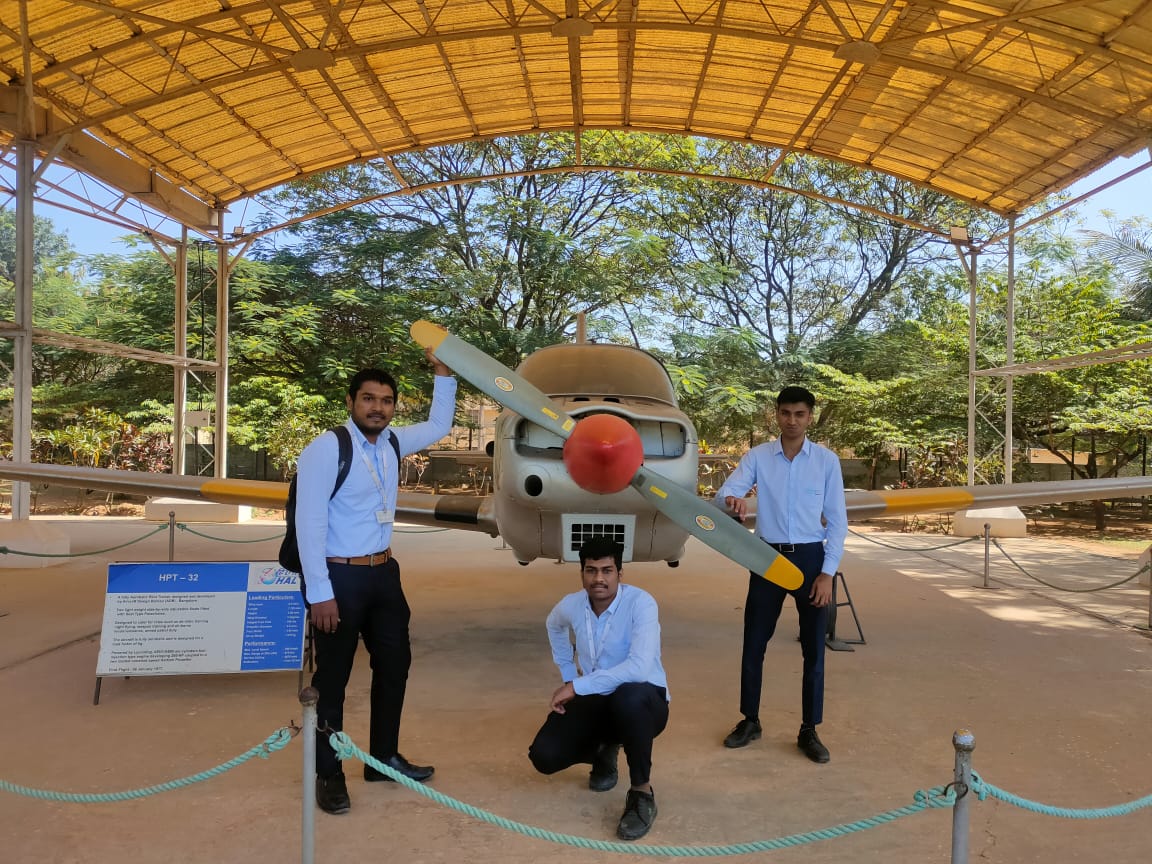Why Skybird
Why Skybird
About Skybird Aviation
• Skybird Aviation is a Frontline aviation professional training institute in India.
• This industry expansion implies a high demand for professionals.
• Skybird Aviation is affiliated with Bengaluru City University.
• College Imparts Quality Education.
• Good academic ambiance & Infrastructure.
• Approved Airport ground handling Agency by Bureau of Civil Aviation Security Govt of India.
• Approved Auxiliary Service Provider at Airport by Bureau of Civil Aviation Security Govt of India.
• Highly experienced and qualified faculty with extensive industry and research background.
• Industry interaction through guest lectures and industrial visits.
• 100% Quality Placement Assistance.
• Building up social responsibility through NSS, focusing on students’ holistic development.

Aviation Industry
India’s national flag carrier after merging with in 2007 and plays a major role in connecting India with the rest of the world. Air India, Indigo, Vistara, Spicejet, Air Asia are the major carriers in order of their market share. These airlines connect more than 80 cities across India and also operate overseas routes after the liberalization of Indian aviation. Several other foreign airlines connect Indian cities with other major cities across the globe. However, a large section of country’s air transport potential remains untapped, even though the Delhi & Mumbai– air corridor is ranked the world’s third-busiest route.

Introduction
India is the third-largest civil aviation market in the world as of 2021
The total number of domestic and international airports in India 2023 counts to 487 airports/airstrips, out of which AAI manages a total of 137 airports which include 34 International airports (3 Civil Enclaves), and 10 Customs airports (4 Civil Enclaves), and 103 Domestic airports (23 Civil Enclaves).
Total passenger traffic across the country during April- September 2022 was 150 million. There has been a growth of over 33% in the number of passengers carried by Indian domestic carriers in 2021 as compared to 2020. (838.14 lakh passengers in 2021 while 630.11 lakh passengers in 2020).
Market Size
The Ministry of Civil Aviation released a report entitled “Vision 2040” on 15 January 2019 outlining a roadmap for the future of civil aviation in India. The report projects that air passenger traffic will increase six fold to 1.1 billion by 2040 including 821 million domestic and 303 million international passengers. The report estimates that a total of 2,359 aircraft would be required to server passengers in March 2040. The government expects air cargo movement to quadruple to 17 million tons in 2040. The Ministry projected that the number of airport in India would rise from 101 in January 2019 to around 190–200 by March 2040 and an estimated 150,000 acres of land and US$40–50 billion of capital would be required for construction. The government proposed creating a $2 billion fund to help support low-traffic airports. The report also targets establishing an aircraft manufacturing base in India by 2040
INDIA’s domestic air passenger traffic grew 56.82 per cent to 1.20 crore in February over the same month last year, as per the data released by the Directorate General of Civil Aviation. All domestic carriers together had flown a total of 76.96 lakh passengers on local routes in February 2022.
The growth in traffic was led by market leader IndiGo, which flew 67.42 lakh passengers during the previous month, cornering 55.9 per cent of the total domestic passenger traffic in February 2023.
AirAsia India, and Vistara, which in the process of merging with Air India, together transported a total of 29.75 lakh domestic air passengers during the month under review.
The total market share of the three entities together was 24.6 per cent during the reporting month, as per DGCA data.
Budget carrier which is facing multiple headwinds, recorded the highest load factor at 91 per cent in February 2023 while IndiGo delivered the top on-time performance at 88.8 per cent on an average from across four key airports — Delhi, Mumbai, Hyderabad and Bengaluru.
UDAN Scheme
Ministry of Civil Aviation’s flagship program Regional Connectivity Scheme UDAN (Ude Deshka Aam Nagrik) has completed 5 years of success since the launch of it first flight by Prime Minister on 27th April 2017. The scheme was initiated on 21st October 2016 with the objective to fulfil the aspirations of the common citizen by following the vision of ‘Ude Deshka Aam Nagrik’, with an enhanced aviation infrastructure and air connectivity in tier II and tier III cities.
In the last five years, UDAN has significantly increased the regional air-connectivity in the country. There were 74 operational airports in 2014. Because of the UDAN scheme this number has increased to 141 by now.
68 underserved/unserved destinations which include 58 Airports, 8 Heliports & 2 Water Aerodromes have been connected under UDAN scheme. With 425 new routes initiated under the scheme, UDAN has provided air connectivity to more than 29 States/ UTs across the length and breadth of the country. More than one crore passengers have availed the benefits of this scheme as on 4th August 2022. The scheme has also provided a much-needed platform to the regional carriers to scale up their operations.
220 destinations (airports/heliports/water aerodromes) under UDAN are targeted to be completed by 2026 with 1000 routes to provide air connectivity to unconnected destinations in the country. Under UDAN, 954 routes have already been awarded to connect 156airports.
On the occasion, Minister of Civil Aviation Shri Jyotiraditya M. Scindia said,“The Success of RCS UDAN is a demonstration of the government’s commitment to Prime Minister’s vision of ‘Ude Desh ka Aam Nagrik’. It has played a great role in the transformation of Indian aviation industry. So far under this scheme, we have 425 routes aiming to go up to 1000 routes, 68 new airports aiming to touch 100 airports. In next 4 years we are expecting 40 crore travelers through Civil Aviation in India. That day is not far when along with rail transport and road transport Civil Aviation will become the bulwark of the transportation in India.”
RCS-UDAN was formulated based on the review of The National Civil Aviation Policy (NCAP)-2016 and it was planned to remain in force for a period of 10 years. It has a self-financing mechanism with the development of Regional Connectivity Fund (RCF). Under this Scheme, RCF was created, which funds the VGF requirements of the scheme through a levy on certain domestic flights. This way, funds generated from the sector themselves stimulate the growth and development of the sector.
UDAN Scheme has benefitted a diverse set of stakeholders. Passengers have got the benefits of air connectivity, airlines have received concessions for operating regional routes, unserved regions have received the direct and indirect benefits of air connectivity for their economic development.
UDAN created a framework based on the need and led to the formulation of:
• Lifeline UDAN (for transportation of medical cargo during pandemic).
• Krishi UDAN (value realization of agriculture products especially in Northeastern Region {NER} and tribal districts).
• International UDAN routes for NER to explore International Connectivity from / to Guwahati and Imphal.
Lifeline UDAN – Lifeline UDAN initiative commenced in March 2020 during COVID-19 period and it helped to operate 588 flights transporting almost 1000 Tons of voluminous cargo and essential medical services to various parts of the country.
RCS-UDAN was awarded Prime Minister’s Award for Excellence in Public Administration under Innovation Category for the year 2020. Republic Day Tableau for 26th January 2022 on UDAN was adjudged as the Best Tableau by the Ministry of Defence.
UDAN Scheme of Ministry of Civil Aviation completes 5 years of success
More than one crore passengers flown since the inception of the scheme
425 New routes started under the scheme
58 airports, 8 heliports and 2 water aerodromes have been connected
1000 Routes and 220 airports are planned to be facilitated under the scheme by 2026



Government Initiatives
- The private sector is being encouraged to become actively involved in the construction of airports through different Public Private Partnership models, with substantial state support in terms of financing, concessional land allotment, tax holidays and other incentives.
- The government introduced various proposals for Maintenance, Repair and Overhaul (MRO) operations for airplanes. These include customs and excise duty exemption for tools and tool-kits used in MRO works. The government has also scrapped the one-year restriction for utilization of duty free parts apart from allowing import of unserviceable parts by MROs for providing exchange. As per revised norms, the foreign aircraft brought in to India for MRO work would now be permitted to stay up to six months or as extended by aviation regulator Directorate General of Civil Aviation (DGCA). Such foreign aircraft would also be henceforth permitted to carry passengers in the flights at the start and end of its period of stay in India. Some major initiatives undertaken by the government are:
- The Ministry of Civil Aviation has finalized and put forward for approval to the Union Cabinet, the new aviation policy, which includes proposals such as allowing new airlines to fly abroad, introduction of more regional flights and a new formula for granting bilateral flying rights.
- The Indian Space Research Organization (ISRO) has signed a memorandum of understanding (MoU) with the Airports Authority of India (AAI), aimed at providing space technology for construction of airports.
- Airports Authority of India (AAI) plans to develop city-side infrastructure at several regional airports across India, with help from private players for building of hotels, car parks and other facilities, and thereby boost its non-aeronautical revenues.
- Directorate General of Civil Aviation (DGCA), India’s aviation regulator, has signed an agreement with United States Technical Development Agency (USTDA) for India Aviation Safety Technical Assistance Phase II, aimed at bringing in systemic improvements in the area of operation, airworthiness and licensing.
- The Government of India has given site clearance to Delhi Mumbai Industrial Corridor and Development Corporation (DMICDC) for setting up of a Greenfield Airport for public use near Bhiwadi in Alwar district of Rajasthan and has granted ‘in-principle’ approval to other Greenfield airport projects.
- The Airports Authority of India (AAI) plans to revive and operationalize around 50 airports in India to improve regional and remote air connectivity.
- The Directorate General of Civil Aviation (DGCA) has given its approval to Air India’s maintenance, repair and overhaul (MRO) unit.
